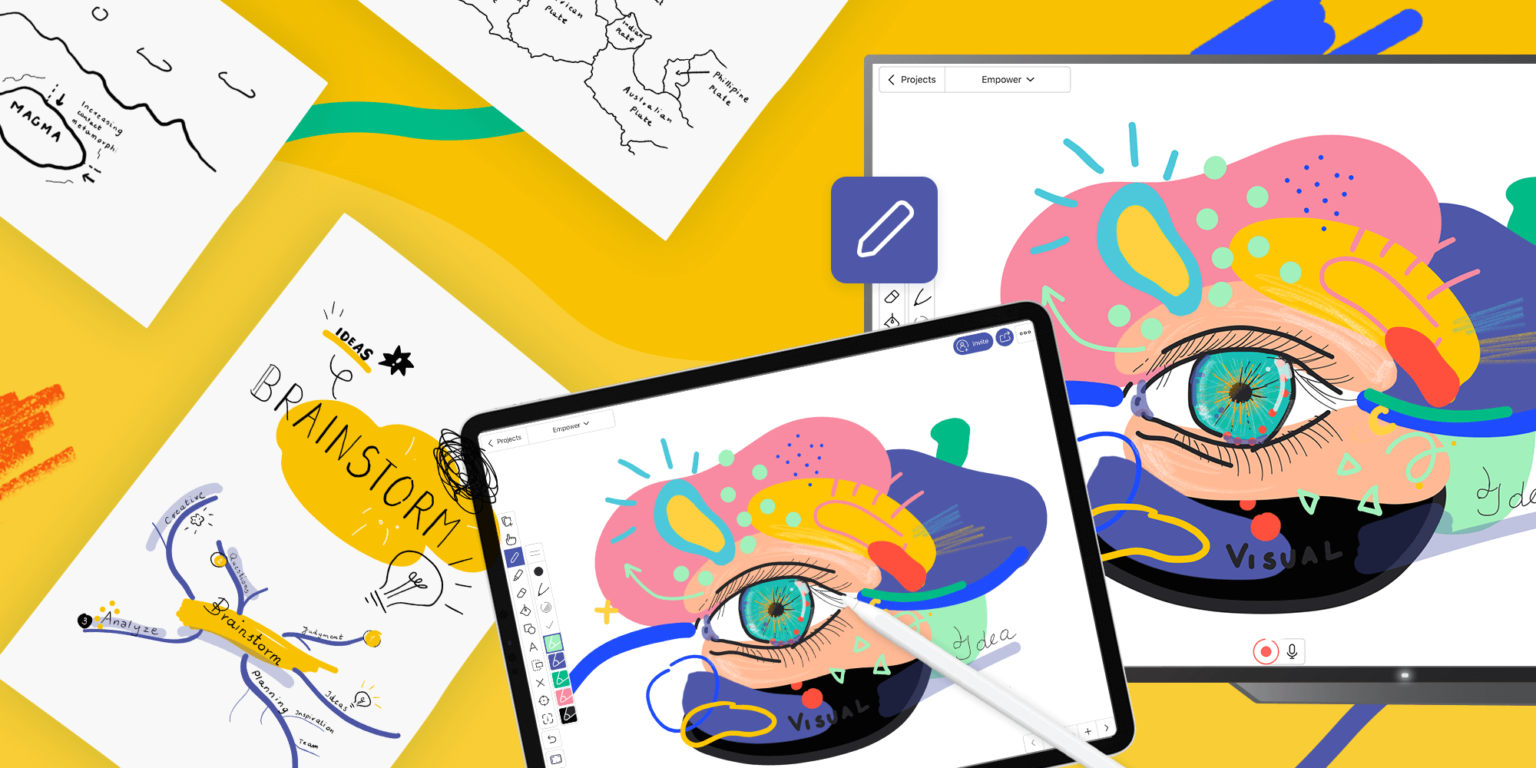Dancing pixels — what do cut-out animations and visual facilitation have in common?

Table of Contents
In 1961, Terry Gilliam and David Sibbet met at Occidental College. Their meeting, though they could not have known it at the time, would have a profound impact on visual communication — both in the fields of art and learning. The way both men employed visuals in their fields broke ground for interactive recordable whiteboards long, long before the technology was capable of bringing their vision to life.
Animator meets visual facilitator
Terry Gilliam might be best known for his feature films, but it was animations that originally kick started his career. The unique style of these animations was most prominently characterised by Gilliam’s idea to mix his own art with backgrounds and moving cutouts from photographs. This art form was one of the cornerstones of Monty Python’s Flying Circus’ fame and popularity, popularizing a new type of visual language — simple, yet striking.
Check out some examples and story of cut-out animations here.
Animations like Gilliam’s were also extremely labor-intensive prior to the digital revolution! Despite his deep interest and involvement in the topic, Gilliam struggled to popularize his technique. Technology was simply not yet ready to pass his visual inventions on to the everyday person, and sharing his templates without the Internet bordered on the impossible. Optical discs did not then possess the capacity to contain even his colorful graphics, and there were no devices that allowed for hand gestures to substitute the paper he used as a medium.
Take a look at this quick demo to learn how to create a modern Monty Python-like animation:
The now obvious limitations of paper as a medium were not as apparent back when Terry Gilliam met David Sibbet at Occidental College in 1961. Both challenged standards of excellence with their visually striking posters, defining early standards of excellence in presentation. David took the art of visuals in the direction of graphic storytelling in business later on in his life. For him, visuals were so not so much there to entertain, but rather to support the discovery of new ideas and concepts. During his group sessions, sketchnoting was done live on flip charts or walls to support the idea evolution process, from inception to maturity. This approach made him the founding father of visual facilitation, a method that we discussed on our marathon 10h livestream with Greg Voisen, host of the Inside Personal Growth podcast:
Pixels replacing strokes
Things are vastly different today than they were a few decades ago, however. Thanks to advances in technology, paper has ceased to be the sole medium for cut out animation, drawing or sketching. These days, omnipresent tablets have the ability to digitally supercharge the entire processes that both Gilliam and Sibbet used in their work.
The barriers suppressing the popularization of their inventions and techniques are a thing of the past. Animation is no longer solely the domain of professionals, but can be whipped up by any individual in mere minutes, putting objects in motion with a few taps of the finger on the canvas of a recordable whiteboard. The same is also true for group ideation. Visual facilitation sessions can now use digital whiteboards the same way they once used flip charts, only now the process is open to remote participants as well.
It is no surprise that Gilliam and Sibbet started the shift toward a more visual means of expression. The sixties marked the rise of the influence of Alan Watts and Arthur M. Young — modern philosophers who appreciated the process more than the static and fixed. It was Watts who acknowledged that communication is largely inconsequential if we think of it as simply a means to an end. The motion, the dance, and the delight are of much greater importance! That’s exactly the attitude that helped spawn Sibbet’s visual facilitation method, or Gilliam’s visual language of expression. Visual digital whiteboards embrace this legacy and take that vision further by making it easy to create such new types of expression and convey meaning with visuals and motion.
Purposes and formats of visuals – from simple to complex:
Time to put that piece of paper aside, pick up your tablet and download Explain Everything. Move beyond past limitations and explore the potential of all of the richer forms of expression at your fingertips!
Learn how to record explainer videos and share them anytime. Sign up for the recording

